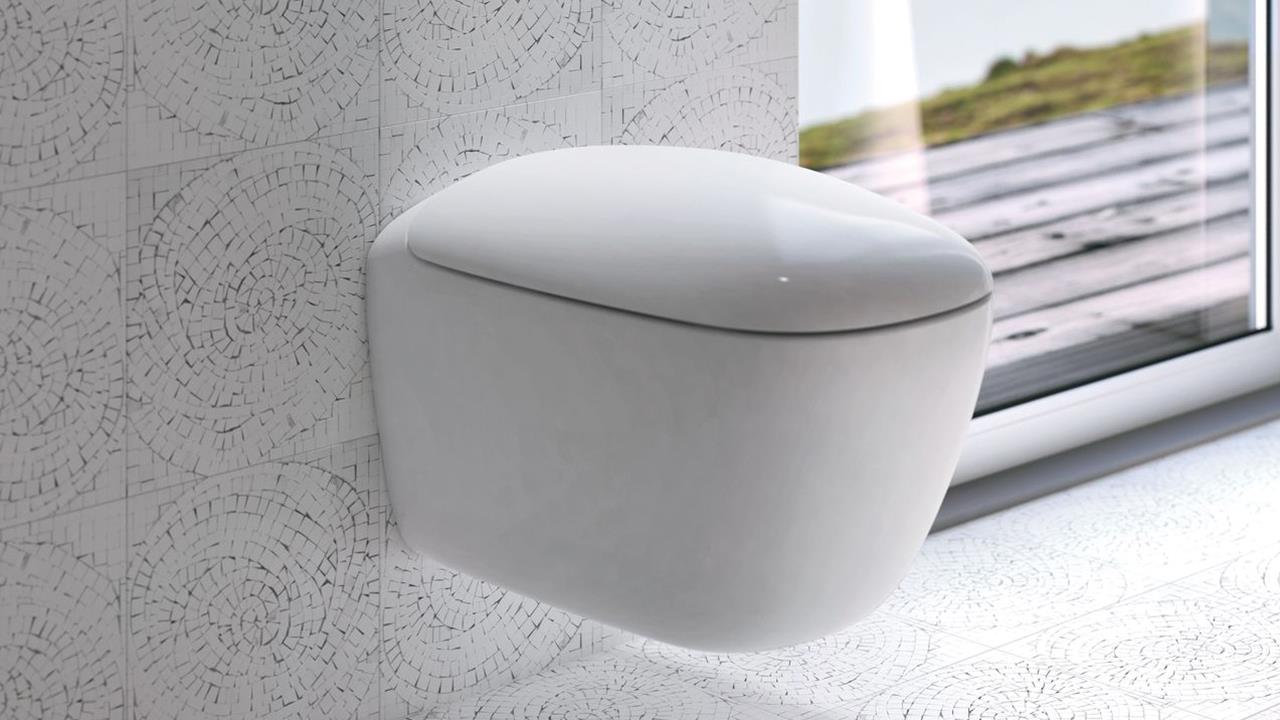

Daniel Fairfield, Product Manager at Geberit, looks at the rise in affordable wall-hung sanitaryware and dispels some wall-hung myths.
The average size of the UK home is shrinking, with today’s newbuild properties typically smaller than 30 years ago, according to data from LABC Warranty, and the average size of a bathroom is now just 4.4m2. Yet, according to a survey from
MoneySuperMarket last year, bathrooms are among the most popular renovation projects for homeowners. Coming up with a practical yet attractive bathroom design that overcomes these space restrictions is, therefore, a huge challenge.
According to RIBA, the average size of a newbuild home is just 46m2 – the same space in a tube carriage. Indeed, Britain’s houses have never been smaller, with homes built from 2010 onwards now more than 4m2 smaller than those built in the previous decade, according to LABC Warranty.
Meanwhile, the bathroom remains an important part of this ever-shrinking home. Research carried out by Geberit in 2017 told us that the bathroom was the most popular place for sanctuary in the home and an escape for many from our always-on world.
So, all of this leaves installers with a challenge – how to create an attractive yet functional bathroom that meets the needs of customers, while still tackling the issue of space?
Going wall-hung
Manufacturers have been developing solutions that maximise space without compromising on design and, thanks to product development innovations, affordable wall-hung sanitaryware is now more readily available than ever.
As a result, wall-hung toilets with concealed cisterns and pre-wall frames are becoming an increasingly popular choice for installers in the UK.
By concealing the cistern and lifting the toilet’s footprint off the floor, a tiny bathroom can easily appear bigger. And it’s not just the practical benefits – the sleek and streamlined appearance of a wall-hung toilet can really enhance the room’s aesthetics and make it a stand-out space.
Flexibility in design
Opting for a wall-hung system can also offer real flexibility to a bathroom project. For example, the frames enable toilets to be easily installed in more awkward spaces, such as under a window, in a narrow wall duct, or under a sloping ceiling. In addition, seat heights can be easily adjusted to a variety of options.
Lifting the toilet off the floor also makes maintenance and cleaning much easier – another big sell for your customers who can clean around and underneath with ease. Plus, with no hard to reach areas, dirt and dust accumulation is significantly reduced compared to close coupled toilets.
Hung up on wall-hung?
Wall-hung systems have all too often in the past been associated with difficult installation processes, but quick and affordable pre-wall frame systems for wall-hung ceramics, such as Geberit’s Duofix frame system, have been designed with installation and ease of maintenance in mind.
Budget blowout?
Another myth around wall-hung ceramics is the cost implications for installers and, in turn, their customers. Yet, such systems are now more widely available than ever before and more affordable, debunking the myth that such systems are only a luxury item.
Don’t forget, too, the opportunities that going wall-hung can present to your own business. The installation efficiencies, for example, will save you time – plus, introducing your customers to style-led choices that maximise their space can boost your reputation.
Despite the quicker, simplified installation process, specifying a wall-hung toilet using these systems is still a clear upsell opportunity compared to a floor-mounted alternative. Some additional specialist labour costs are maintained, but without blowing the budget which could cause an installer to lose the project entirely.
The bottom line
When you consider the installation efficiencies together with the design flexibility, plus the opportunity to sell affordable and innovative bathroom systems, going wall-hung is a win-win for the installer and end-user.
The growing availability of these systems offers installers a very simple opportunity to execute an innovative design for your customers that could boost your bottom line and overcome the ever-growing challenge of space constraints.
If you'd like to keep up-to-date with the latest developments in the heating and plumbing industry, why not subscribe to our weekly newsletters? Just click the button below and you can ensure all the latest industry news and new product information lands in your inbox every week.